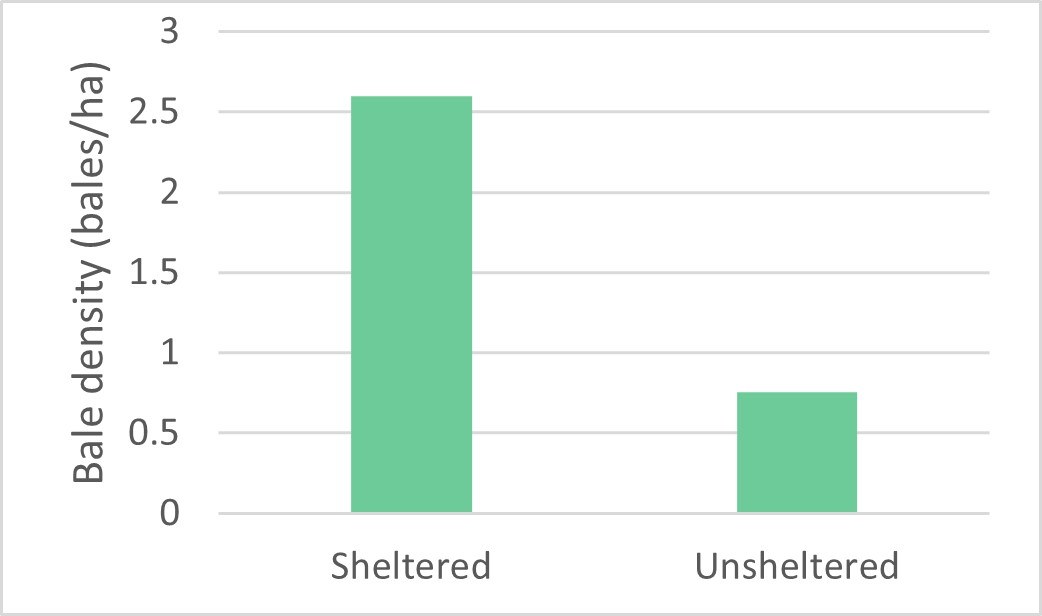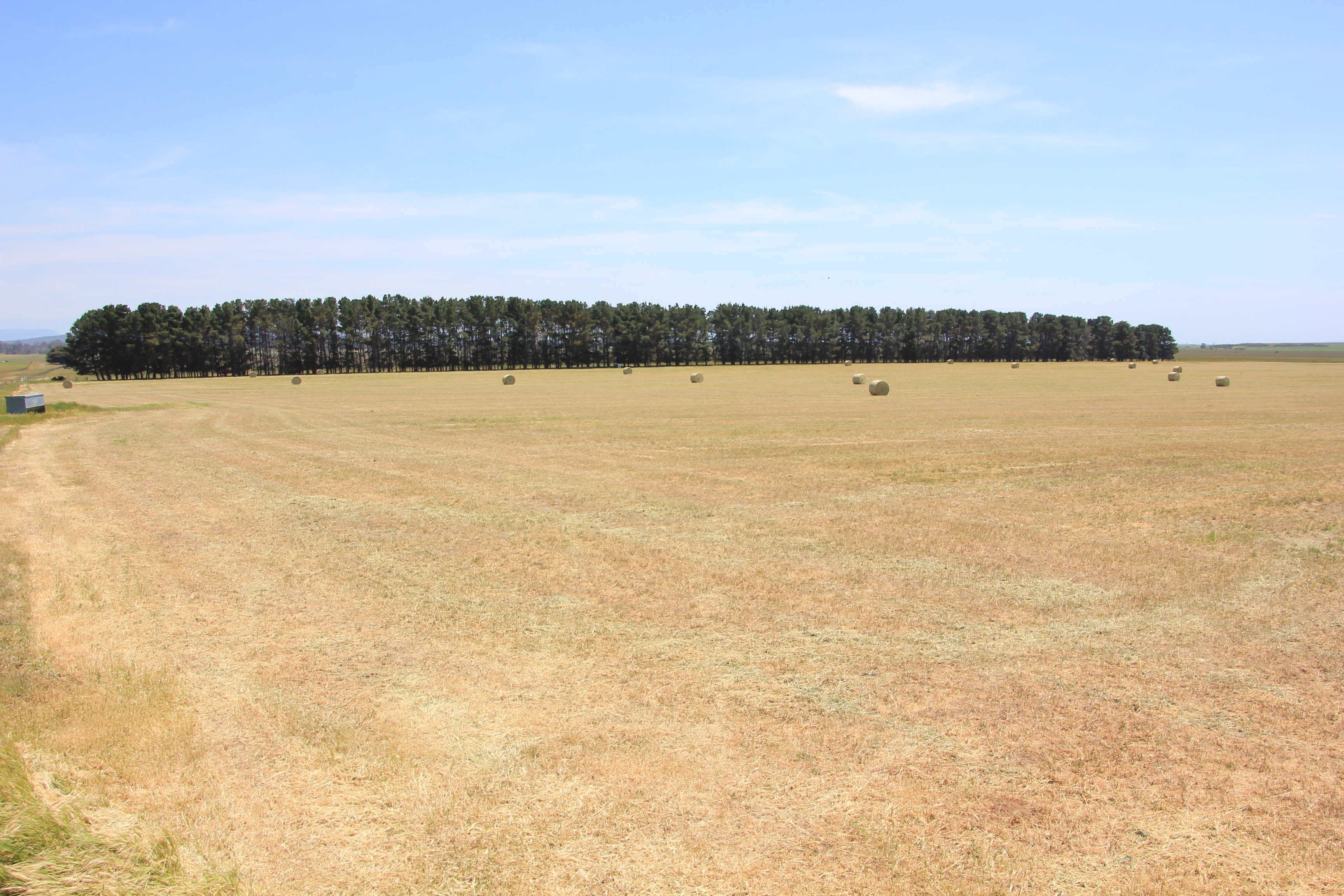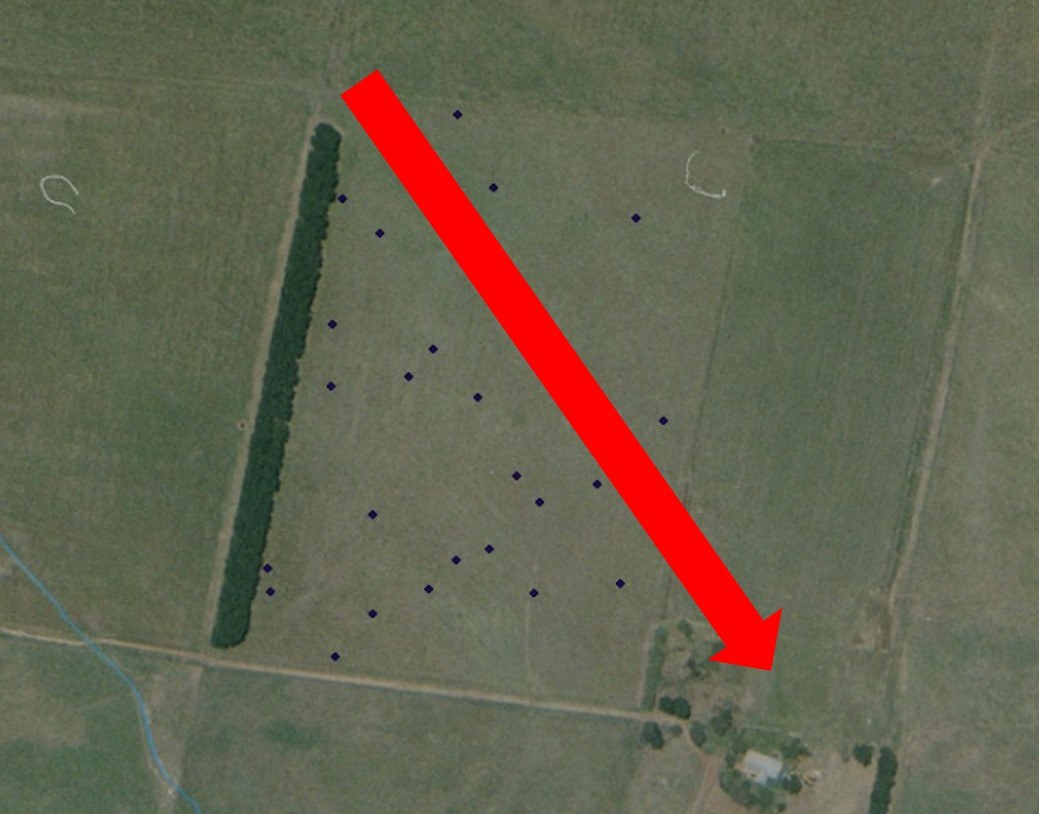Case Study - Agroforestry
3. Shelter improves lucerne yield
Woorak, Epping Forest, Northern Midlands - Lucerne hay yields were estimated to have increased by up to 300% due to reduced wind speeds in the lee of the pine shelter belt. This equates to over $1,000 of additional benefit across the sheltered area of the paddock (about $147/ha).
Download PDF
At a glance
| Owner | Daniel Fish |
| Property name | Woorak |
| Location | Epping Forest, Midlands, Northern Tasmania |
| Property size | 12.5 hectare paddock |
| Enterprise | Sheep and cropping |
| Rainfall | 550mm (long term annual rainfall) |
| Soil type | Brown chromosol: sandy loam over heavy clay |
| Forested area | 1.5 acres (approx) |
Key points
- Shelter provided a 3-fold increase in lucerne bale density for sheltered area.
- Estimated increase in lucerne hay production of over $1,000.
Shelter improves Lucerne yield
Round bales of Lucerne hay that had been dropped in a paddock in the Northern Midlands in the lee and outside of the lee of a N/S belt of pinus radiata were measured. The baling started close to the tree line and followed a zig-zag pattern from tree line to furthest part of the paddock away from the tree line. Thus, the bales are likely to be close to the point where their hay was grown, especially in relation to the trees.
Value of shelter
While there are several assumptions surrounding the assessment of the shelter benefit to the Lucerne hay production in this case, if a new hay bale value of $80/bale is assumed, and the bale density is assumed to accurately reflect the effects of shelter, then the net benefit of shelter is around an extra $147/ha for this harvest, or $1,133 across the sheltered 7.7ha of the paddock.


Wind
The wind at the site for Spring 2017 (the growing season for Lucerne) was measured in a nearby paddock, where the agroforestry research project has an automatic continuously monitoring weather station. The results from the wind monitoring clearly show that most of the wind comes from the NW and NNW (50% of all wind), another 9% of the wind originated from the north, and 7% from the WNW. All other directions contributed to 5% or less of the total wind over this time.
"Lucerne hay yields were estimated to have increased by up to 300% due to reduced wind speeds in the lee of the pine shelter belt. This equated to over $1,000 of additional benefit across the sheltered area of the paddock (about $147/ha)".

The 30+ year old unmanaged multi-row pine shelterbelt
Viewed from the south (above). The net paddock area is around 12-hectares (420m x 290m) and the belt is 420 metres in length.

Hay bale locations
The locations of each bale were assessed and plotted. An arrow showing the sheltered and unsheltered parts of the paddock is drawn with approximately 7.7ha in the sheltered zone (64% of paddock area), and 5.3ha (36%) in the unsheltered zone, to the north of the shelter line. A total of 20 bales were in the sheltered zone (17% of the hay). This equates to 2.6 bales of hay/ha in the sheltered zone and 0.75 bales of hay/ha in the unsheltered zone, or more than 3-fold the hay production (on an area basis) in the sheltered zone.
Conclusions
The bales were dropped in November 2017. The red arrow represents the average predominant wind direction (between NW and NNW), in relation to the top end of the belt. Bales to the south of the line are in the portion of the paddock. As depicted, there was greater bale density in the sheltered area compared to the unsheltered area of the paddock with a 3-fold increase in bale density in the sheltered area, and an estimated value of the shelter to the hay production of over $1,000. The results are an indication of the benefits of shelter but do not form a definitive assessment of the shelter effect on hay production. This is because it was a one-off measure and uncontrolled factors such as baler path and how far the hay was moved from the point of growing to the point of bale drop introduce uncertainty.
Acknowledgements
Daniel Mendham, Martin Moroni, David Bower, Arthur Lyons, CSIRO Land and Water).
